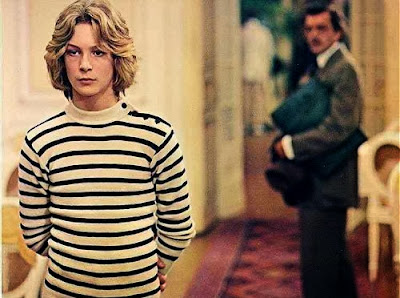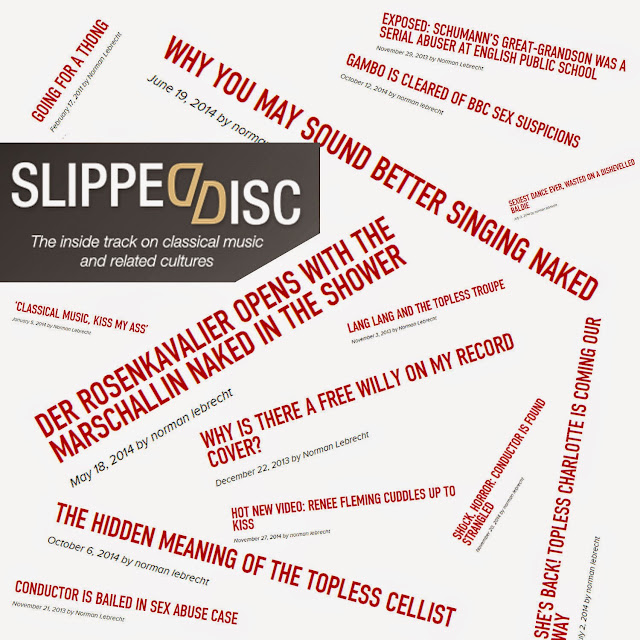On the path of history's most notorious child abuser
“Nothing, nothing is worth the crime of the abuse of a child” was the heartfelt comment added by a reader to a recent post. Child abuse is currently in the public eye, but the despicable crime has a history stretching back centuries. Tasteless coverage of this sensitive topic must be avoided at all costs; but treating child abuse as the crime that dare not speak its name must also be avoided. So, today's post takes us to France on the path of arguably history’s most notorious child abuser. And the reason for writing this post is that the villain is the subject of an undeservedly overlooked oratorio by an acclaimed contemporary composer; a composer who, coincidentally, is a woman.
Prior to becoming probably the most notorious child abusers in history, the Breton knight Gilles de Rais fought alongside Joan of Arc against the English. Born in 1404, Gilles de Rais was heir to a family fortune that included several castles in the west of France; he earned early notoriety by first proposing marriage to a four-year-old orphan girl, and then abducting his cousin and marrying her in secret. After a distinguished military career he retired from army life in 1435 and committed a large part of his fortune to extravagant ecclesiastical activities. These included endowing a foundation dedicated to the Holy Innocents at Machecoul, where the divine offices were celebrated with magnificent holy vestements, splendid sacred vessels, several specially commissioned portative organs, and a choir of young boys. Another venture was a vast theatrical spectacle celebrating the siege of Orléans – where Gilles had fought alongside the Maid of Orléans - which deployed one hundred and forty players in group tableaux. The magnificence of these spectacles was matched only by their cost, and the retired knight’s reckless spending precipitated his financial collapse.
For some years Gilles de Rais had dabbled in the then fashionable practice of alchemy. This practice is commonly understood to involve transmuting mercury into gold. But there are two more arcane applications of alchemy. One is its use to attain true wisdom or gnosis by creating ‘sophic’ gold. This search for gnosis leads to the third and most sinister aspect of alchemy, the transmutation not of base metals but of human souls, and it was this sinister aspect that was the downfall of Gilles de Rais. Having squandered his fortune by reckless spending, the bankrupt knight struck the most terrible deal with the Devil, by offering the souls of children in return for knowledge, power and riches.
By his own confession Gilles de Rais first procured, abused and murdered children in 1432. During the following years his activities escalated and at his trial the number of his abused and murdered victims - girls as well as boys - was estimated at more than two hundred; many of the crimes took place at Tiffauges Castle in the Vendée, which makes the accompanying photos taken by me during a recent visit to Tiffauges chillingly relevant. What happened in these chambers is described in the castle guidebook as “too unbearably gruesome to be recounted in detail”. But, elsewhere – and an adult advisory applies to the following passage - Gilles de Rais' biographer tells of lavish banquets, followed by acts of masturbation over the intended victims, dismemberment, decapitation and necrophilia, elsewhere sodomy and cannibalism are mentioned, and in his own confession the murderer talked of sitting on his victims stomachs and taking pleasure in seeing them die. After this the bodies of his young victims were burnt in the castle’s fireplace.
In 1440 Gilles de Rais was arrested following a dispute with a priest during the celebration of mass. The subsequent ecclesiastical investigation uncovered his crimes and he was condemned to death and hanged at Nantes. In recent times a number of apologists have questioned his guilt, these include the occultist Aleister Crowley and a 1992 tribunal of Freemasons and French officials. The terrible events of five centuries ago continue to exert a morbid appeal, and it has been suggested that the exploits of Gilles de Rais inspired the French folktale Bluebeard, on which Bela Bartók's based his opera Bluebeard’s Castle. But, although noteworthy, that is not the reason I wrote this post.
In 1991 the French Ministry of Culture commissioned composer Edith Canat de Chizy (b. 1950) to write a lyric drama based on Enzo Cormann’s dramatic poem recounting the last hours of Gilles de Rais’ life. Edith Canat de Chizy studied at the Paris Conservatoire with Maurice Ohana and Ivo Malec; her music is widely performed, and an Aeon CD of her orchestral music includes probably her best known work Yell in a performance by the BBC Symphony Orchestra. Her Tombeau de Gilles de Rais for orchestra, children's and mixed choir, baritone soloist and reciter was first performed in 1993 at the Charterhouse, the experimental arts centre in Villeneuves-les-Avignon , and has been recorded by Disques Pierre Verany. Enzo Cormann’s libretto avoids any element of melodrama by taking an allegorical view of Gilles de Rais' last hours between sentence and execution, and it is an ambiguous and non-judgemental portrait that does not pronounce on his motivation or guilt. The excellent sounding recording from the acoustically outstanding L’Arsenal in Metz is available in both CD and MP3 formats, with the price heavily skewed in favour of the download version - amusingly amazon.co.uk categorises the MP3 version as ‘Classic Rock’. Edith Canat de Chizy’s Tombeau de Gilles de Rais may be topical for all the wrong reasons, but is still very well worth investigating.
Also on Facebook and Twitter. All photos are (c) On An Overgrown Path 2012. No review samples were used in this post and my research trip to the Vendée was self-funded. Report broken links, missing images and errors to - overgrownpath at hotmail dot co dot uk
















Comments
What shocked me was that the moderator asked both what percentage of child abusers they would estimate are women. The man answered first and said 45%. The academic said she thought 50%. It is hard to grasp at first, but there followed a litany of vices from mothers who sleep with and sexualize their sons, often when they are barely more than todddlers, to women who put tight elastic bands on boys' penises. There is worse, both sexual abuse and other, but it's not necessary to specify such to make the point.
Of course, like male rape, this is indeed a crime that dare not speak its name. That it is so common yet so under-reported (an understatement) is in no small part because so ingrained in us is the concept of woman as the mothering figure, the nurturer and comforter, and so important in the psyche is this archetype, that children so abused rarely reveal it, and if they do, there is a natural resistance on the part of authorities to believe it.
I had even more reason to accept the figures offered on that programme when I became involved in the prison parole system. In the inmate files you find this commonly mentioned in the psychological assessments. I do recall one particular moment of enlightenment: a man who said that when he was four, his mother stuffed him in a fish tank and then stuck him with pins. I must confess I thought, oh, come on! But I turned the page and there was a document rare in these files: the original social worker's report confirming what the man said.
I found no reviews of either of those books, and it remains now a crime that is rarely spoken of because people cannot accept it.